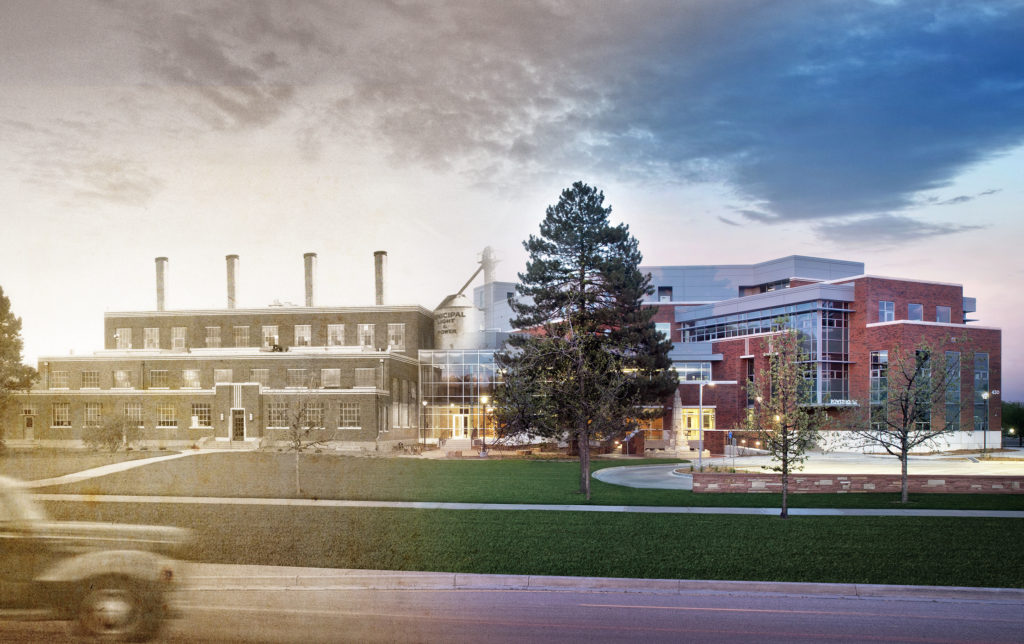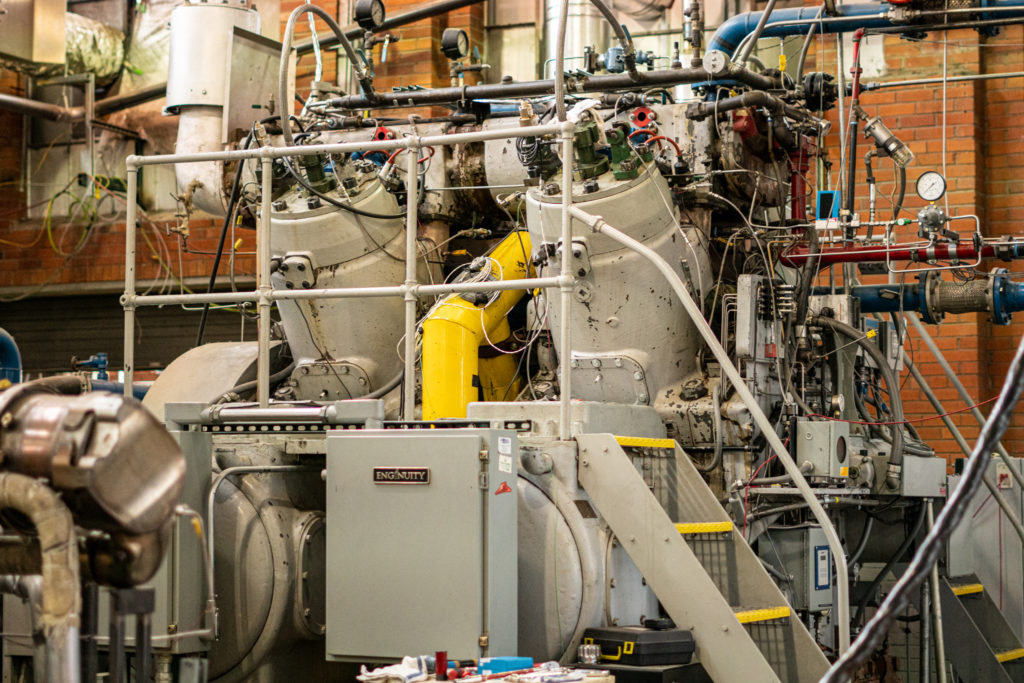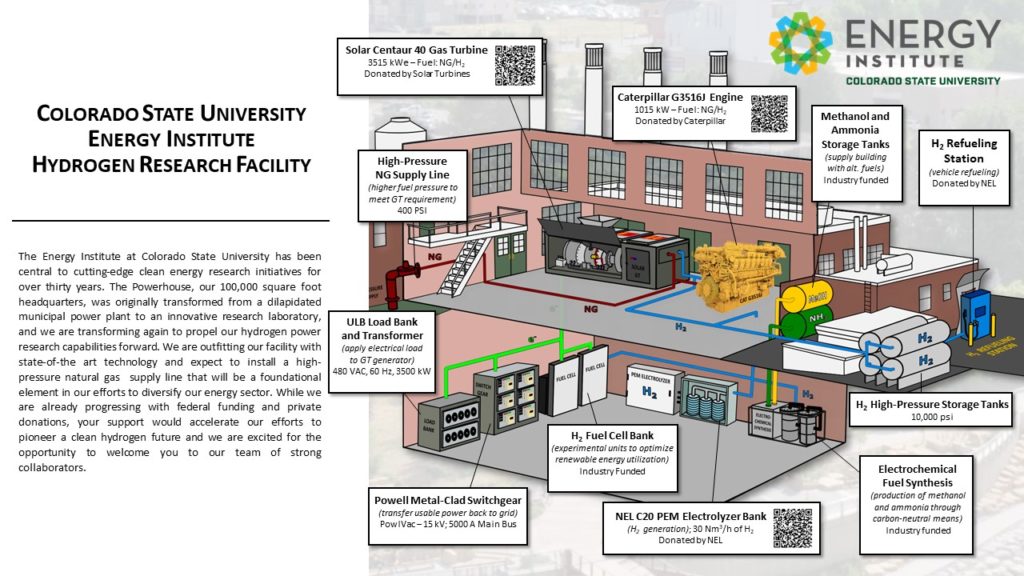From Pigeon Haven to Research Center Juggernaut
A history of the Engines and Energy Conversion Lab and its two main projects
By: Austin Hannon; Events, PR & Communications Coordinator
If you tour the Powerhouse Energy Campus at Colorado State University, chances are the first “wow” moment you’ll have is not about the abundance or reach of the research, but how Bryan Willson obtained the footing for the 100,000-square foot facility. The seed that spurred it all was the Engines and Energy Conversion Lab, which was conceived in 1992 out of the decommissioned Fort Collins Municipal Power Plant (1936–1976) that had lain vacant for 15 years.
Willson purchased the critter-infested, 35,000-square-foot facility on a lease for $1 per year from the city to conduct his research as an assistant professor of mechanical engineering at CSU. Thirty years later, the engines lab has expanded by 65,000-square-feet, becoming the Powerhouse Energy Campus in 2014 and hosting approximately $20 million worth of research annually.
“The Powerhouse journey really took a liability — an abandoned power plant — for the community, and turned it into a resource, an internationally known energy solutions center,” Willson said. “It was also a very different time in energy. We were facing energy supply shortages. Natural gas was a resource we were running out of. Renewables were just a glimmer on the horizon. And climate change was only in its very infancy of coming onto the national stage.”
The transformation has all the components of a “Flip This House” episode for a university.

The Project Foundations
When Willson started the lab in 1992, he had two projects in hand. One was with the natural gas pipeline industry, and the other was with the Department of Energy to do the first studies on hydrogen-natural gas mixtures.
Three decades later, both projects still have a presence in the engines lab despite serving different roles in its story. The pipeline project enjoyed immediate success with demonstrable benefits, while the hydrogen project is just now getting its second wind.
“At the time, there was tension due to the intensive goals for the pipelines and our other work with hydrogen, which they viewed as a distraction,” Willson said. “[Hydrogen] was work that no one really cared about for the next 27 or 28 years. And it’s really all anyone wants to talk about right now. The irony is that it is now highly enabling for the pipeline industry’s future and the hydrogen future, because we have those connections.”

The Cooper Bessemer GMV, the engines lab’s research engine for the pipeline project, still sits and runs in the same spot today. Thousands of these types of engines are utilized across the country to move natural gas and oil through our nation’s pipelines. The work at CSU’s engines lab is responsible for knocking the emissions of nitrogen oxides from 20 grams to 0.1 grams parts per million, which is equal to removing 150 million cars off the road. Up until October 2022, it was the largest engine in the lab.
Now, Willson’s hydrogen work has come full circle, bringing back a familiar face. Tom Pellette, Caterpillar Inc.’s executive vice president, worked closely with Willson on his early-era pipeline work. Pellette had the chance to reconnect with the Powerhouse when Caterpillar’s subsidiary Solar Turbines donated a 3.5 mega-watt turbine engine to CSU for research purposes. The pair even shared a mentor, Sam Clowney, who now is a namesake to a scholarship for prospective students that work at the Energy Institute.
The addition of the gas turbine that arrived in October revs up the Energy Institute’s work on a four-year, $4.5 million U.S. DoE project. The project aims to develop a retrofittable, dry, low-emissions gas turbine combustion system that can run on 100% hydrogen as well as blends of hydrogen and natural gas.
“Solar is a leader in hydrogen combustion. We’ve been combusting hydrogen for decades, but there is more advancement that needs to be done to arrive at a solution that will fit the hydrogen economy, and this [Powerhouse] is where that is going to happen,” Pellette said.
While the Engines and Energy Conversion Lab has a long history with hydrogen, that work will accelerate in the years ahead. New projects are underway on advanced electrolysis, hydrogen utilization, use of hydrogen aircraft and unmanned aerial vehicles, and work on hydrogen carriers such as ammonia and methanol.

In July of 2022, CSU’s Architectural Virtual Library completed a three-dimensional tour of the EECL along with nine other historical buildings in Fort Collins.
A full history of the EECL and Powerhouse Energy Campus can be found here along with a timeline.
For More on the CSU Energy Institute follow: Twitter — CSUEnergy | Instagram — csuenergy | Facebook — energyinstitutecsu|TikTok — csuenergyinstitute
